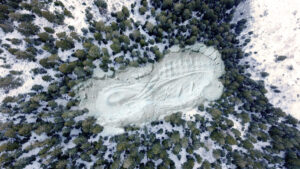Summit has antimony, copper and increasingly valuable gallium at its Ahmed project

Summit has identified antimony, copper and pleasantly enough gallium at its Ahmed project. Pic via Getty Images
Exploration at Summit’s Ahmed project in Morocco has identified occurrences of both antimony and copper though the real surprise was encountering gallium, which has entered the public eye.
Geological mapping and rock chip sampling across the majority of the Moroccan project had identified occurrences of antimony and copper-bearing rocks while stream sediment geochemistry outlined anomalous gallium of up to 5.56 parts per million in several drainages extending over a 5km length.
Whilst exploration is still at a very early stage, the results have nonetheless captured the attention of both Summit Minerals (ASX:SUM) and its in-country partner Ashgill Morocco.
And why shouldn’t it?
Both antimony and copper are very much in demand around the world with the former listed as a critical mineral by the US due to its military applications while the red metal is essential for electrification.
However, it is the rather pleasant discovery of gallium that is particularly intriguing.
Gallium is one of two metals – the other being germanium – used in the construction of semiconductor chips, the building blocks of the technology used in IT, smartphones, computers, EVs and military applications like radars, lasers and spy satellites.
However, the majority of production of the two metals – 68% and about 90% respectively – comes from China, and it has just pushed out a new requirement for exporters to seek approval to ship gallium and germanium.
“Outcropping copper-bearing gossans and stibnite mineralisation, the witnessed structural complexity, and the continuity of gallium numbers over the 5km length implies things are happening in the hinterland at Ahmed,” exploration manager Jonathan King said.
“Though it remains early days, these occurrences excite both Ashgill and Summit.”
Ahmed exploration
During the current mapping campaign, Ashgill geologists identified occurrences of stibnite (antimony) mineralisation in the southern and northern research licences as well as copper sulphides and the oxides, malachite and azurite in the northern research licence.
Summit noted that several intensely altered alkaline intrusive plugs or stocks are emplaced along the faulted quartz-filled contacts between sandstone and sulphidic graphitic shale, which is indicative of potential skarn mineralisation.
This is encouraging as skarn deposits are often economic sources of tin, tungsten, manganese, copper, gold, zinc, lead, nickel, molybdenum, and iron.
Meanwhile, the areas of anomalous gallium include a 5km long section that corresponds with a structurally disrupted zone.
Anomalous gallium, with a peak result of 5.56ppm, was returned from 10 samples draining various points along the length of the structure though the e significance of the numbers and the source area is yet to be investigated.
This article was developed in collaboration with Summit Minerals, a Stockhead advertiser at the time of publishing.
This article does not constitute financial product advice. You should consider obtaining independent advice before making any financial decisions.
Related Topics

UNLOCK INSIGHTS
Discover the untold stories of emerging ASX stocks.
Daily news and expert analysis, it's free to subscribe.
By proceeding, you confirm you understand that we handle personal information in accordance with our Privacy Policy.








